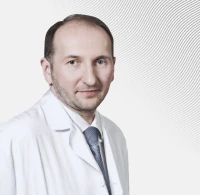Meningioma of the brain
Advantages of meningioma treatment in EMC




Causes of brain tumor
Brain tumors occur due to the breakdown of the genome in the cells of the membranes of the brain. Of the hereditary diseases, neurofibromatosis also often leads to the appearance of tumors in adults. Another cause of a brain tumor may be an unfavorable environmental situation.Types of meningioma
Meningiomas of the brain can be malignant and benign. Tumors consist of different cells and are classified according to the predominant component. Benign meningiomas include fibrotic, transitional, meningotheliomatous, psammomatous, and mixed. Atypical and anaplastic meningiomas are distinguished from malignant meningiomas. The most difficult thing to deal with is malignant meningiomas: they grow faster and recur more often. Patients most often experience benign meningiomas. Meningiomas of the brain are also classified according to their location in the head (frontal lobe, temporal, occipital and parietal).
Treatment of meningioma of the brain
There are several methods of treating meningioma – conservative, surgical, radiation therapy, and endovascular surgery. Depending on the type of tumor, its size and aggressiveness, these treatments can be combined. The complex of treatment is determined individually for each patient: the decision is made by the neurosurgeon and oncologist. Important fact: steroid medications for brain tumors are not a treatment method, but an emergency first aid kit. They are used when meningioma of the brain causes severe swelling of the brain, and it is necessary to gain time to prepare the patient for surgical treatment. Steroid medications for meningioma help to avoid massive edema of the brain and reduce the risk of an adverse outcome.
Conservative treatment
If the meningioma of the brain is benign, smaller than 1 cm in size and does not grow, it should be monitored regularly every 3-6 months using MRI with contrast. A neurosurgeon and a neurorentgenologist examine the images and decide whether to have surgery and remove the meningioma. The conservative method is most often used to treat benign meningiomas of small size.
Open surgery. Removal of meningioma
Even if the benign meningioma of the brain is small and the patient has no symptoms, it is important to monitor its condition. If the doctor sees that the brain tumor is growing during dynamic monitoring (performed every 3-6 months), then it is important to remove it in time before it begins to compress the nerve structures and leads to swelling in the brain. If the tumor destroys the bones of the skull, this is also an indication for surgical treatment.
Surgical treatment of meningioma is the most preferred way to fight the tumor. Since most meningiomas of the brain are benign, surgery often leads to a complete cure – meningioma relapse occurs only in 3-5% with radical removal of the formation.
Modern robots have not replaced the hands of an experienced neurosurgeon, so an open surgery method is used for brain tumors. At the EMC, such operations are performed by highly qualified doctors with extensive experience in meningioma removal. Tumors are removed using minimally invasive surgery, which allows manipulation of the tumor structures with high sensitivity and protects the brain from damage.
During surgical removal of a brain tumor, the EMC uses innovative techniques. These are neurophysiological monitoring, neuronavigation, intraoperative MRI and radiation therapy: all this helps to reduce the likelihood of recurrence of such a tumor.
Thanks to intraoperative MRI, surgeons can monitor the process of tumor removal and make the surgical treatment process safe.
Endovascular surgery
If the tumor is large, it often has many vessels and is richly supplied with blood: sometimes such a meningioma needs to be embolized using endovascular surgery before surgery. Using special adhesive compositions, the surgeon closes part of the vessels on the meningioma. Subsequently, the patient practically does not lose blood during the operation. Sometimes endovascular vascular sealing is the only way to treat elderly patients when they cannot undergo major surgery. This method stops tumor growth and preserves the quality of life.
Radiation therapy
There are cases in which doctors combine surgical treatment of meningioma with radiation. This method of treatment is often used for malignant meningioma. Doctors irradiate the tumor bed or part of it (which cannot be removed).
The EMC also uses stereotactic radiosurgery (SRS) to treat meningiomas. Before the start of the radiation therapy session, a four-dimensional CT scan (computed tomography) is performed. This makes it possible to identify the target for tumor irradiation in the most accurate way. As a result of this approach, the meningioma of the brain is directly irradiated during radiation therapy, while healthy tissues remain intact.
Meningioma of the brain responds well to treatment using the latest generation of Varian EDGE and TrueBeam devices: they are used for radiation therapy and for radiation surgery. This triggers the photolysis process, during which free radicals kill tumor cells.
Radiation therapy is not required for every meningioma: the final decision is made by a council of doctors of different specialties (radiotherapists, neurosurgeons, oncologists) .
Symptoms and signs of meningiomas
The most common type is benign meningioma of the brain, which grows slowly without any special signs. The first symptoms appear when the tumors increase in size: as a result, the meningioma compresses the brain and nerve structures. This often leads to brain swelling. The symptoms depend on which part of the head the neoplasm has appeared. Thus, meningioma of the brain in the frontal lobes causes emotional disorders and epilepsy, meningioma of the brain in the temporal region often causes seizures. If a tumor has formed in the back of the head, the patient may experience visual hallucinations. The symptoms of malignant meningioma appear faster because the tumor is growing much more aggressively. If you experience similar symptoms, it is important to consult a doctor immediately.
Diagnosis of meningiomas
Very often, meningioma of the brain is diagnosed completely by accident during annual checkups, since there are no symptoms. If the doctor suspects meningioma, he refers the patient for magnetic resonance imaging (MRI) with contrast. This study allows us to assess the size of the tumor: how strongly it affects the brain and whether it needs to be removed (surgery is not always required for meningiomas of the brain)
.
Rehabilitation
- After the removal of the brain tumor, the patient is transferred to the intensive care unit – it is important that neuro-resuscitators monitor his condition there (there is an EMC staff).
- The day after the operation, the patient can usually sit on the bed, get up, and move around the room under the supervision of doctors.
- He is monitored by specialists for 7-10 days.
- If the patient has no adverse symptoms, he can continue treatment on an outpatient basis, after which the stitches are removed.
- After removal of the tumor, it is recommended to spend 2-3 weeks of rehabilitation in a specialized EMC center in Zhukovka.
Complications after surgery
The causes of complications after meningioma removal are most often associated with infection. To avoid them, the EMC operating room clinic uses a special air disinfection system with laminar flows in the operating rooms, which do not allow air from outside to enter the operating unit. Sterile disposable instruments are also used during surgery to remove meningiomas and other tumors. Neurological complications often occur in patients after removal of brain tumors – they manifest themselves with symptoms such as weakness in the leg or arm, vision problems. Trained neurophysiologists are present at the EMC for surgery, who help to remove the tumor and avoid touching other brain structures. Modern equipment also contributes to the safety and high efficiency of each tumor removal operation. This means that the patient's recovery will take place without adverse symptoms and complications.
Contraindications to surgery
Usually, the reasons why meningioma cannot be removed are related to the patient's severe somatic condition. The EMC clinic employs a team of highly qualified specialists of various categories, which allows for surgery for a patient who is in extremely serious condition and reduces the risk of complications after tumor removal. So, if a patient enters the EMC with a neurological deficit and meningioma, we remove the tumor and create conditions for further comfortable recovery. The patient is undergoing stage-by-stage rehabilitation at our Center in Zhukovka, where his condition is monitored by various specialists (not only a neurologist and a neurosurgeon) .
Why the EMC
The first and only clinic in Russia, created in the image of the world's leading clinics
EMC is a multidisciplinary center offering patients a high level of medical services and a personalized approach
Worldwide recognition and awards
 Learn more
Learn more
Worldwide recognition and awards
 Certificates and licenses
Certificates and licenses
Make an appointment for a consultation
Specify your contacts and we will contact you to clarify the details
Reviews
and new products of the EMC



